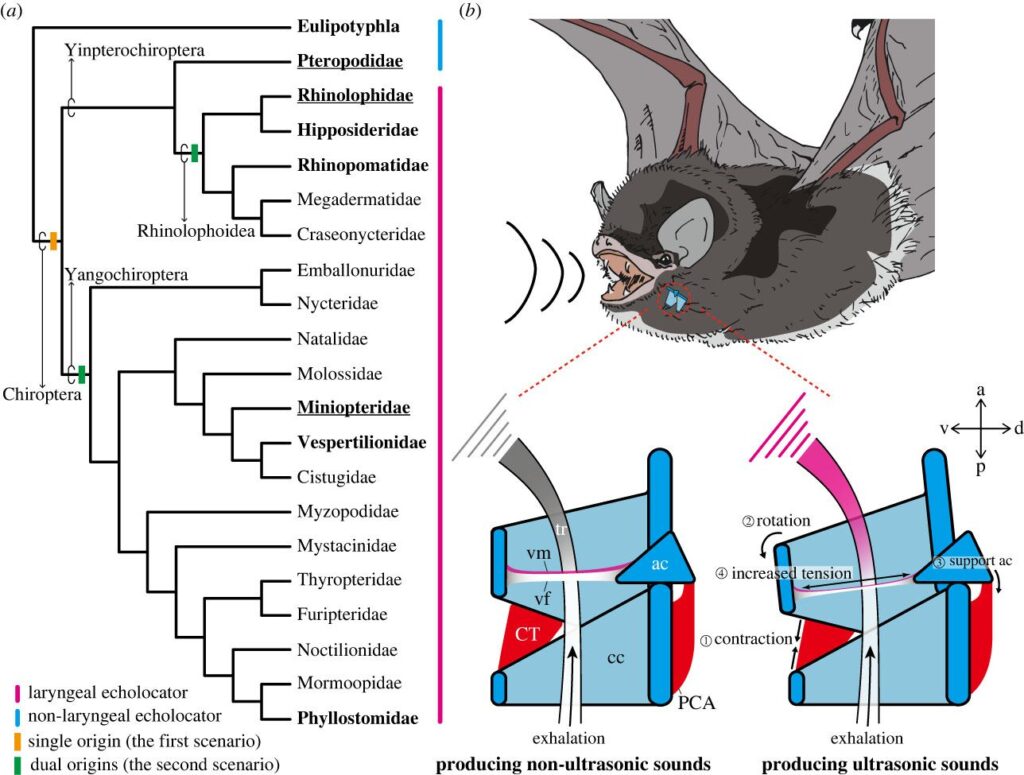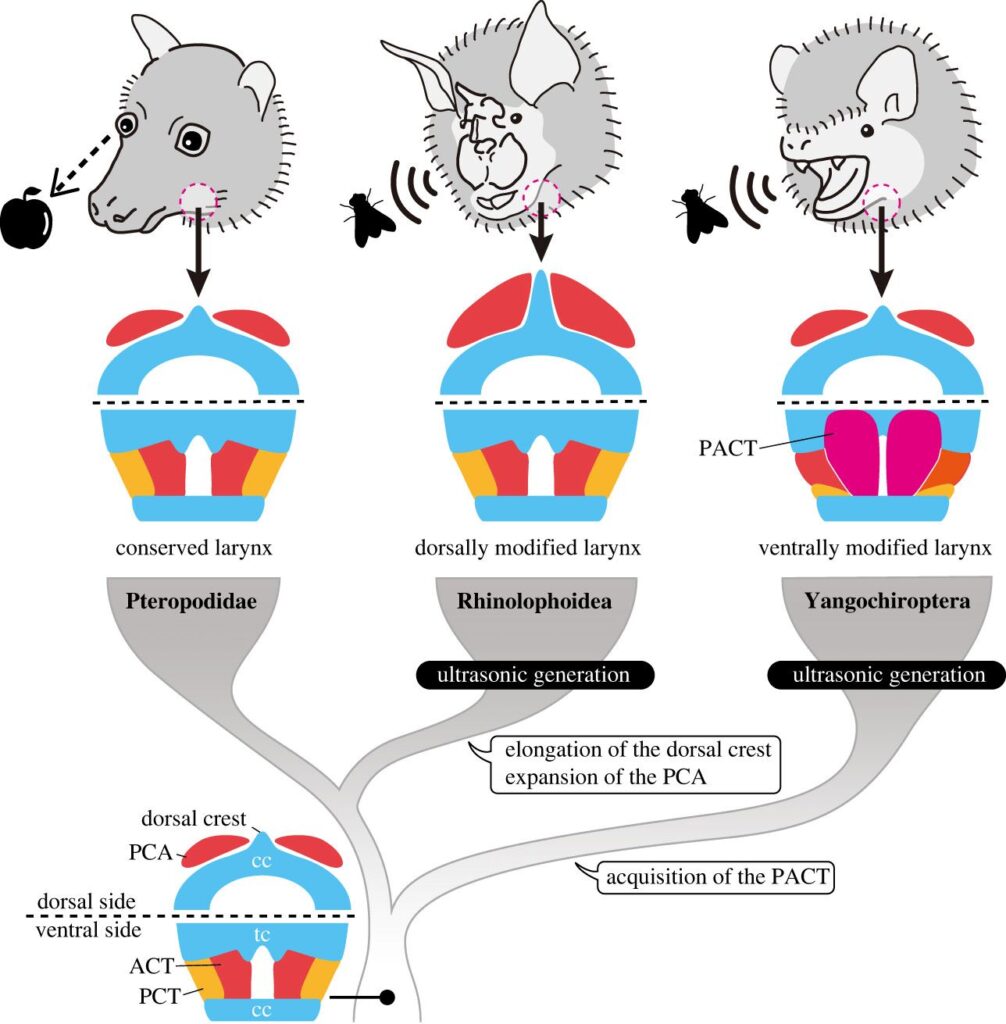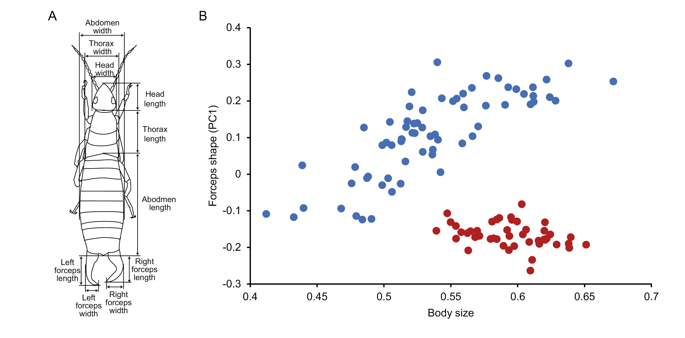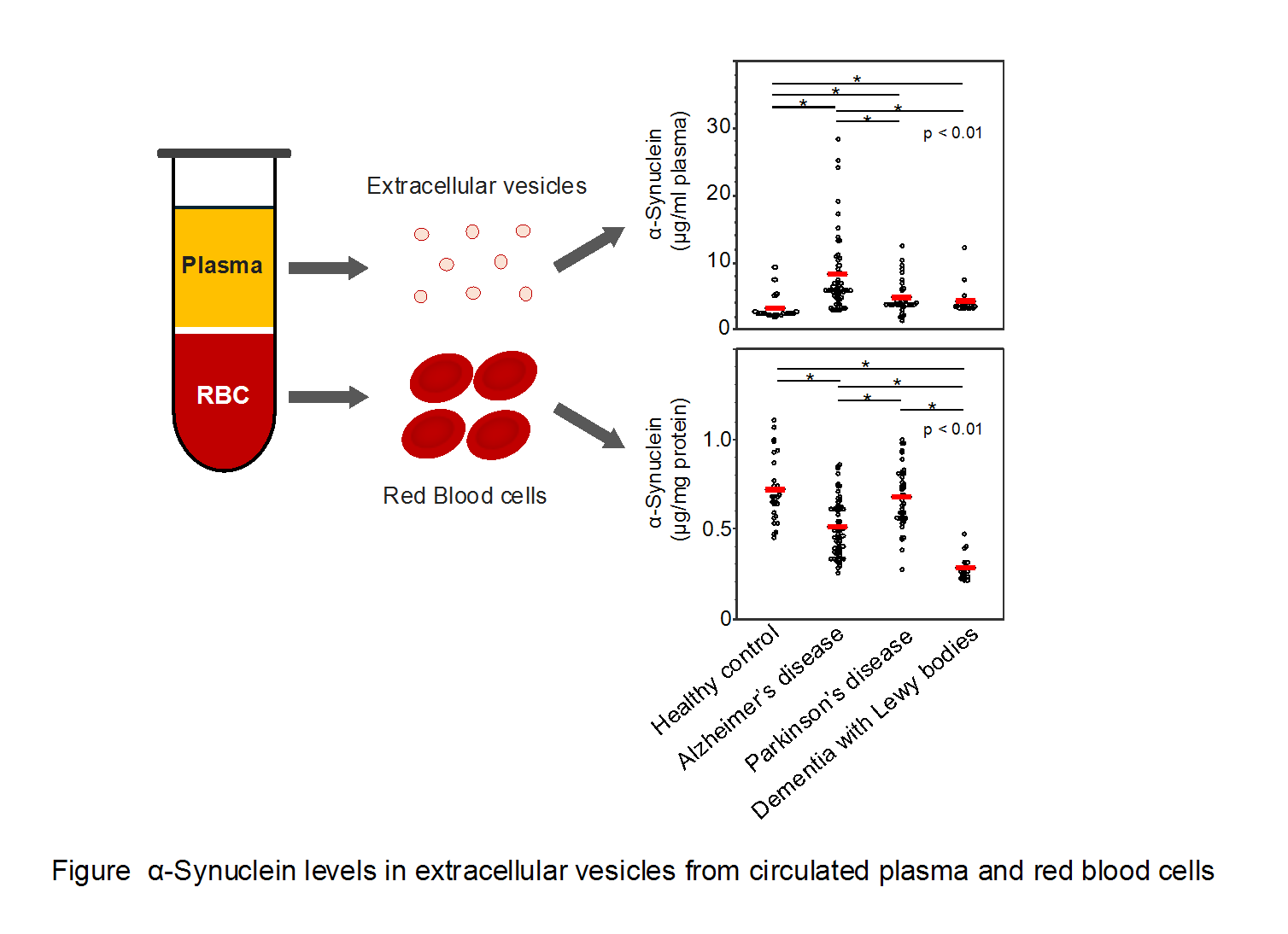January 31, 2024
Researchers approached the origin of bat laryngeal echolocation from laryngeal morphogenesis
Evolutionary origin of laryngeal echolocation in bats (Order Chiroptera) is one of the vital issues to be addressed in evolutionary biology. Dr. Masayoshi Tokita’s research group at the Faculty of Science, Toho University, examined adults and embryos of phylogenetically wide range species of bats and investigated the morphological diversity and developmental pattern of the larynx, which generates the ultrasonic sounds used in laryngeal echolocation. The study revealed that different parts of the larynx had been morphologically changed in the two echolocating bat lineages, Yangochiroptera and Rhinolophoidea, although there is no morphological specialization in non-echolocating bat lineage, Pteropodidae. These findings suggest that the laryngeal echolocation of bats have evolved in the two echolocating lineages independently through specialization of their laryngeal morphology. This study may help to make a conclusion about evolutionary history of the bat laryngeal echolocation and provide new insights into the relationship between bats and viruses that attracts interests of citizens recently.
The results of this study were published on January 31, 2024, in the Proceedings of the Royal Society B: Biological Sciences.
The results of this study were published on January 31, 2024, in the Proceedings of the Royal Society B: Biological Sciences.

Evolutionary scenarios for the origin of laryngeal echolocation in bats and the functional mechanism for ultrasonic generation in bat larynxes. (a) Molecular phylogeny of bats on which acquisition timing of laryngeal echolocation ability was mapped. The families including the species used in the adult anatomical examinations are highlighted with bold characters. The families including the species used in the embryological analyses are highlighted with underlines. (b) Schematic representations of a miniopterid bat larynx illustrating the general mechanism for high-frequency sound generation in bats: contraction of the anterior and posterior cricothyroid muscles (1), followed by ventroposterior rotation of thyroid cartilage (2), prevention of ventroposterior rotation of arytenoid cartilage by contraction of posterior cricoarytenoid muscle which acts as antagonist muscle to the anterior and posterior cricothyroid muscles (3), and finally, production of ultrasonic sounds by the vibration of the stretched vocal fold and vocal membrane (4). The orientation of the larynx illustrations is indicated to their upper-right: a, anterior; d, dorsal; p, posterior; v, ventral. ac, arytenoid cartilage; cc, cricoid cartilage; CT, cricothyroid muscle; hy, hyoid bone; PCA, posterior cricoarytenoid muscle; tc, thyroid cartilage; tr, trachea; vf, vocal fold; vm, vocal membrane.Lorem ipsum dolor sit amet, consectetur adipiscing elit. Ut elit tellus, luctus nec ullamcorper mattis, pulvinar dapibus leo.
Key Points:
- Among bats, the species belonging to the superfamily Rhinolophoidea and suborder Yangochiroptera are capable of laryngeal echolocation, whereas the species of the family Pteropodidae are not.
- To date, there are two conflicting hypotheses: 1) the laryngeal echolocation was acquired once during bat evolution (the single origin scenario) or 2) it was acquired in each of Rhinolophoidea and Yangochiroptera independently (the independent dual origin scenario).
- In this study, the larynx generating ultrasonic sound was focused, and the laryngeal morphogenesis were compared among the bat lineages.
- In echolocating yangochiropteran bats, the novel muscle was observed in the ventral side of the larynx.
- Conversely, in the echolocating rhinolophoid bats, the cartilaginous crest on the dorsal surface of the larynx is remarkably projected and the muscle attached to the crest is substantially expanded.
- The results supported the independent dual origin scenario of bat laryngeal echolocation.

Evolutionary scenario of ultrasonic sound generation suggested by the comparison of laryngeal morphogenesis among three bat linages. Our study demonstrated that the larynx of Rhinolophoidea has been modified on the dorsal side, with a dorsally elongated dorsal crest and expansion of the posterior cricoarytenoid. On the other hand, the larynx of Yangochiroptera has been modified on the ventral side, through acquisition of the novel preanterior cricothyroid muscle. Non-echolocating pteropodids preserve the ancestral laryngeal condition. Distinct modifications of the larynx suggest that ultrasonic sound generation has evolved convergently in two linages of echolocating bats.
Journal
Proceedings of the Royal Society B: Biological Sciences, January 31, 2024 issue
Title
Musculoskeletal morphogenesis supports the convergent evolution of bat laryngeal echolocation
Authors
Kaoru Usui, Tomoki Yamamoto, Eraqi R. Khannoon, and Masayoshi Tokita*
DOI No.
10.1098/rspb.2023.2196
Proceedings of the Royal Society B: Biological Sciences, January 31, 2024 issue
Title
Musculoskeletal morphogenesis supports the convergent evolution of bat laryngeal echolocation
Authors
Kaoru Usui, Tomoki Yamamoto, Eraqi R. Khannoon, and Masayoshi Tokita*
DOI No.
10.1098/rspb.2023.2196
READ MORE RESEARCH NEWS - SCIENCE
ACADEMICS
Undergraduate Programs
– Medicine
– Pharmaceutical Sciences
– Science
– Nursing
– Health Science
Graduate Programs
–Medicine
–Pharmaceutical Sciences
–Science
–Nursing
Undergraduate Programs
– Medicine
– Pharmaceutical Sciences
– Science
– Nursing
– Health Science
Graduate Programs
–Medicine
–Pharmaceutical Sciences
–Science
–Nursing
RESEARCH
– News
– Guidelines & Policies
– Support Offices
– Facilities
– Security Export Control
Non-Degree Programs
– Clinical Elective Program
– International Physician Observership Program




